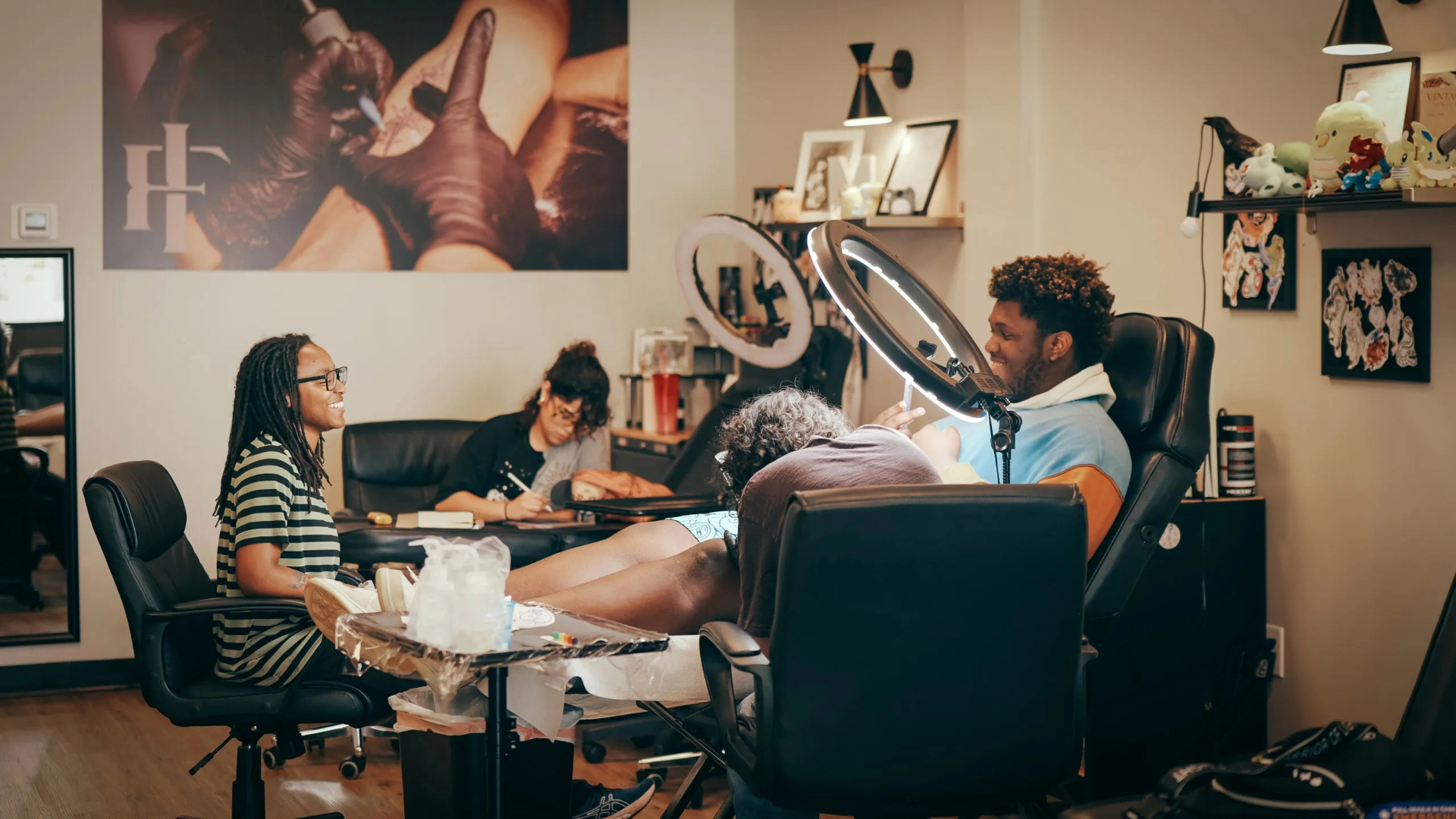Home staging has evolved from an optional service into a critical tool for real estate success. Sellers, agents, builders, and even short-term rental operators now view staging as essential for attracting buyers and renters in competitive markets. The Set the Stage franchise leverages this shift, offering entrepreneurs a streamlined, system-driven business model that combines creativity with structure.
Franchise owners gain access to a proprietary technology platform, curated inventory collections, and a proven operational playbook designed to simplify daily operations and client management. Beyond traditional staging, the model also incorporates furnishings sales—turning design appeal into additional revenue opportunities. This approach positions franchisees not just as service providers, but as trusted design partners within their communities.
Launching a Set the Stage franchise typically requires an initial investment of $190,320–$237,825, which includes the $59,500 franchise fee. This range covers startup essentials such as inventory, technology, training, and working capital. The sections that follow break down how the model operates, the training and support provided, and what kinds of entrepreneurs thrive in this balance of creativity and business systems.
This article is sponsored by Set the Stage. The content has been created in partnership with the brand to provide insights into its business model and franchise opportunities.
What Is the Set the Stage Franchise?
The Set the Stage franchise is a modern home staging and furnishings brand designed for entrepreneurs, interior designers, real estate professionals, and investors who want a scalable, process-driven business. Unlike hobbyist stagers who rely on mismatched or leftover pieces, Set the Stage emphasizes coordinated, trend-forward inventory, professional movers, and a proprietary technology platform that streamlines proposals, scheduling, routing, and inventory tracking.
Franchisees operate across multiple service categories—vacant and occupied staging, model homes, short-term rental furnishing, and retail sales of furniture and décor. This diversified model allows owners to serve different segments of the housing and rental markets, adapting to changing real estate conditions.
Real estate activity never fully stops; it shifts. In seller’s markets, staging enhances curb appeal and helps listings capture attention. In buyer’s markets, it becomes a must-have tool to stand out among comparables. Beyond residential sales, the brand’s framework also connects franchisees with builders, investors, and rental property owners—expanding reach and maintaining relevance across housing cycles.
By combining technology, curated design systems, and operational playbooks, Set the Stage helps franchisees deliver polished, professional results while focusing on leadership, client service, and building community relationships. Instead of improvising, owners start with a tested approach designed to balance creativity with efficiency.
How the Set the Stage Franchise Model Works.
The Set the Stage franchise blends creativity with structured systems to deliver consistent, professional results. The model is designed to be both design-forward and operationally disciplined, giving franchisees the ability to manage teams, serve diverse clients, and maintain organized workflows.
Professional Design, Delivered Consistently.
Franchise owners oversee trained staging teams who use curated, trend-conscious furniture and décor collections. These collections are updated regularly so every project looks polished and photo-ready for real estate listings. Professional movers and installers handle the setup and removal, protecting walls, floors, and timelines while ensuring a stress-free experience for clients.
Multiple Service Channels.
Set the Stage goes beyond traditional home staging. Franchisees can provide vacant and occupied staging, furnish short-term rentals, outfit model homes for builders, and even sell furnishings and décor directly through QR codes linked to online catalogs. This multi-channel approach allows owners to engage with a variety of customer needs in real estate and rental markets.
Lean Operational Footprint.
Unlike some staging businesses that require large warehouses or fleets of trucks, the Set the Stage model is designed to launch without oversized infrastructure. This lean setup helps keep operations manageable and allows franchisees to scale at a pace that fits their business goals.
Exclusive Technology Platform.
At the heart of the system is a proprietary mobile app. From a single platform, franchisees can manage inventory, assign staging teams, schedule jobs, track project notes, send invoices, and monitor daily workflows—all from a phone or tablet. This technology helps reduce errors, streamline communication, and keep projects on track.
Community and Brand Support.
Franchisees benefit from a collaborative peer network that shares strategies, lessons, and best practices. In addition, the corporate team provides professionally produced marketing assets, continuing mentorship, and operational guidance. This combination of community and structured support helps owners build local credibility and deliver consistent client experiences.
The Set the Stage franchise is structured to meet a real need in the housing and rental markets while providing a streamlined framework for owners. With modern technology, curated design collections, and strong brand support, it offers a path for entrepreneurs to combine creativity with business leadership in a growing, design-driven industry.
A Day in the Life: What Set the Stage Franchise Owners Actually Do.
Running a Set the Stage franchise is about much more than creating beautiful interiors—it’s about blending creative oversight with disciplined operations and strong community presence. Owners step into a rhythm that balances project management, leadership, marketing, and relationship-building.
Morning Workflow.
Each day begins with a review inside the proprietary app. Owners check the schedule for installs, de-stages, and walkthroughs, confirm mover arrival times, and ensure access codes are in place for agents or property managers. They also coordinate with designers to verify that look boards and inventory pulls match client expectations. This early alignment sets the tone for an efficient, well-organized day.
Midday Outreach and Relationship-Building.
While staging crews are on-site, franchise owners often focus on business development. This may involve presenting before-and-after staging results at brokerage meetings, introducing booking systems to new agents, or meeting with builders and investors about furnishing packages for model homes or rental units. These touchpoints strengthen partnerships and position the business as a trusted resource in the local real estate community.
Afternoon Management and Marketing.
Later in the day, owners shift gears to administrative and marketing tasks. This includes approving invoices, managing replenishment orders, and reviewing project mixes (starter, accent, or décor packages). They also share curated photos and videos of completed projects across social platforms—using ready-made templates to showcase transformations and attract new leads. Preparing the next day’s schedule ensures continuity and team readiness.
Weekly Cadence and KPI Monitoring.
On a broader weekly rhythm, franchise owners track performance indicators like project turnaround times, install efficiency, and overall client engagement. They also maintain regular contact with top local real estate offices, ensuring pipelines stay active through consistent follow-ups and referral-building activities. These practices reinforce both operational discipline and long-term visibility in the market.
This balance of daily structure and weekly strategy shows how Set the Stage owners function as both creative partners and business leaders. By combining organized processes, design-forward services, and community engagement, franchisees build credibility while keeping operations smooth and professional.
How much does the Set the Stage Franchise cost?
Below is a clean, Item-7–style snapshot reflecting the line items you’ll budget for at launch.
Estimated Initial Investment — Single Territory
| Expenditure | Low Estimate* | High Estimate* |
| Franchise Fee | $59,500* | $59,500* |
| Starter Package | $99,000* | $129,000* |
| Launch Support Fee | $15,000* | $15,000* |
| Rent | $2,200* | $2,800* |
| Infrastructure, Improvements & Tools | $1,420* | $5,325* |
| Vehicle | $0* | $2,500* |
| Laptop Computer & Smartphone | $0* | $1,000* |
| Insurance | $0* | $2,000* |
| Marketing Expenses | $2,700* | $2,700* |
| Training Attendance Expenses | $1,500* | $3,000* |
| Additional Funds (first 3 months) | $9,000* | $15,000* |
| Total Estimated Initial Investment | $190,320* | $237,825* |
*Data based on the company’s Franchise Disclosure Document (FDD). Fees, costs, and figures are estimates and may vary by market, site condition, freight, and vendor pricing.
Training, Launch, and Ongoing Support.
One of the greatest strengths of the Set the Stage franchise is its structured support system, designed to prepare owners of all backgrounds—whether they come from interior design, real estate, or general entrepreneurship—to run a polished and professional business from day one. The goal is to remove guesswork and provide a clear, repeatable framework for success.
Comprehensive Onboarding. Franchisees begin with up to six weeks of hands-on and classroom-style training. This covers everything from staging standards and best practices to inventory management, vendor ordering, pricing strategies, and operational controls. The program ensures that owners understand how to balance the creative side of staging with the business side of operations.
Exclusive Tech Tools. Each owner gains access to the proprietary Set the Stage mobile app, which centralizes workflow management. With one system, you can create proposals and quotes, process deposits, schedule jobs, manage inventory pulls, track photo logs, and generate invoices. This streamlined platform helps keep projects on schedule and consistent across teams.
Marketing Toolkit. To accelerate visibility, franchisees launch with a “marketing in a box” package. This includes polished presentations for real estate brokerages, ready-to-use social media templates, and launch campaigns featuring before-and-after transformations. These tools are designed to build credibility quickly and showcase the professional edge of the brand.
Vendor and Buying Power. Set the Stage has national vendor partnerships that provide access to wholesale furnishings and décor. This makes it easier for owners to regularly refresh their collections, keep designs on trend, and ensure each project delivers a cohesive, photo-ready look that resonates with today’s buyers and renters.
Peer Collaboration and Ongoing Mentorship. Franchisees join a collaborative network built around shared learning. Regular mastermind calls, annual conferences, and peer-to-peer resource sharing create a culture of openness and innovation. In addition, the franchisor provides ongoing mentorship and field support, ensuring that owners always have access to guidance as their business grows.
This structured training and support ecosystem allows new owners to step into the role of business leader with confidence. By combining industry training, proprietary tools, national vendor relationships, and peer collaboration, Set the Stage positions franchisees to focus on leadership, design oversight, and client relationships—knowing the operational playbook is already built.
Who’s the Right Fit for the Set the Stage Franchise?
Not every entrepreneur naturally gravitates toward home staging, but the Set the Stage franchise is built to guide driven professionals into a structured, creative, and community-connected business. The brand looks for people who can balance relationship-building with operational discipline, while trusting the playbook that keeps staging consistent and professional.
- Relationship builders. Owners who genuinely enjoy connecting with others thrive here. They’re comfortable presenting at brokerage meetings, networking with agents, and staying visible in their local communities. These efforts help establish credibility and generate opportunities through professional trust.
- Design-curious leaders. While you don’t need to be a licensed interior designer, an appreciation for good design and willingness to follow curated systems are important. By leaning on the franchise’s look boards and inventory collections, owners can ensure polished, on-trend results that appeal to agents, sellers, and buyers.
- Operators at heart. This is a structured business. Owners who enjoy checklists, scheduling, and analyzing operational data are well-suited. From coordinating installs to monitoring inventory cycles, a process-first mindset helps ensure projects run smoothly.
- Ambitious marketers. With multiple service categories—vacant staging, occupied staging, model-home setup, short-term rental furnishing, and even décor sales—the brand attracts owners who enjoy telling their story, presenting solutions, and keeping their pipeline strong.
The franchise is designed so you don’t need decades of design or construction experience. With comprehensive training, proprietary tools, and a community of peers, franchisees can focus on leadership and client engagement while delivering professional staging solutions. The best fit is someone who balances creativity with discipline and relationships with execution—building a business that’s both rewarding and community-oriented.
Competitive Advantages You Can Leverage from Day One.
One of the key strengths of the Set the Stage franchise is that new owners don’t have to spend years building systems from scratch. The model is designed with built-in advantages that help franchisees stand out quickly in their markets.
- Coordinated, on-trend inventory. Rather than relying on mismatched or outdated items, franchisees use curated collections that are refreshed regularly. This ensures every staging project looks modern, polished, and aligned with today’s buyer expectations.
- Professional movers and logistics. Dedicated moving crews manage the heavy lifting and protect properties during installs and de-stages. This allows franchise owners to focus more on client relationships, local marketing, and maintaining the brand’s reputation.
- Customer purchase option. The franchise integrates a proprietary QR-to-cart system that lets customers buy staged items they admire. This feature provides an additional channel for engagement and strengthens the overall value proposition.
- Lean operational footprint. The business model is designed to avoid oversized warehouses or heavy in-house fleets. Instead, owners can start with a streamlined setup and expand in phases, depending on local demand and their business plan.
- Proprietary tech and systems. A mobile app centralizes quoting, scheduling, inventory management, and invoicing. This helps owners manage their workflow from a phone or tablet, keeping operations efficient without adding complexity.
Together, these advantages mean that franchisees launch with the backing of a polished brand, operational support, and resources that make them more competitive compared to smaller, independent staging providers. From the start, owners can position themselves as professional partners to real estate agents, builders, and property owners seeking high-quality staging solutions.
Risk Factors (and How Owners Can Mitigate Them).
Every business has challenges, and understanding them upfront helps new franchisees prepare effectively. Here are the most common risk factors in the Set the Stage franchise model and practical ways owners can address them:
- Housing market cycles. Real estate activity rises and falls with economic conditions, but the need for staging doesn’t vanish—it shifts. In hot markets, sellers use staging to drive attention and competitive offers; in slower markets, staging helps properties stand out and reduce time on market. Successful owners keep a balanced client mix, working with real estate agents, builders, investors, and short-term rental hosts to maintain activity across segments.
- Logistics and scheduling complexity. Staging requires careful coordination between movers, designers, and real estate professionals. To reduce risks of delays or last-minute changes, owners build buffer windows into schedules, maintain relationships with backup movers, and standardize room-by-room load lists. These practices help protect project timelines and minimize costly rework.
- Inventory management. Furnishings must remain fresh, on-trend, and in good condition. Damage or outdated looks can reduce the appeal of a staging project. Owners use tracking systems to monitor inventory cycles, rotate accent lines regularly, and maintain disciplined replenishment to ensure every project feels polished and current.
- Hands-on leadership. This is not a passive investment. New owners should expect to be directly involved in sales, marketing, and daily operations, especially in the early stages. Over time, they can delegate tasks to staff and focus more on business development and community presence, but active engagement is key to building a strong reputation and client base.
FAQs.
How much does it cost to open a Set the Stage Franchise?
The estimated initial investment is $190,320–$237,825, which includes a $59,500* franchise fee and a curated starter package. Costs vary based on inventory depth, local rent or storage arrangements, and working capital needs. Always review the current Franchise Disclosure Document (FDD) for the most accurate details.
Do I need prior design experience?
No. The franchise provides full training in its design system and look standards. Many current owners come from backgrounds in sales, marketing, real estate, or operations, and learn the creative side through onboarding and ongoing support.
Is a large warehouse required?
No. Owners typically begin with lean storage setups and outsourced movers. As the business grows, additional space can be added, but the model is designed to remain low-overhead compared to traditional warehouse-heavy staging businesses.
How does Set the Stage offer multiple service channels?
Franchisees can deliver value in several ways: vacant and occupied staging, model home installations, and short-term rental furnishing. The system also integrates retail sales—buyers can purchase staged items through QR codes linked to product catalogs—providing a built-in retail channel in addition to staging services.
What support do I get at launch?
Franchisees receive up to six weeks of onboarding that covers design, operations, and financial controls. Owners also gain access to the proprietary Set the Stage app, national vendor buying power, and a “marketing-in-a-box” package with polished decks, social templates, and launch campaigns. Support continues post-launch with ongoing coaching, peer collaboration, and access to the franchise community.
Is the Set the Stage Franchise the right fit for you?
If you’re drawn to a creative, system-driven business that blends design with operational structure, the Set the Stage Franchise is worth considering. The model equips owners to combine elevated aesthetics with repeatable processes, offer staging and furnishings services through one platform, and establish strong local relationships with agents, builders, and property owners. With technology, curated inventory, and marketing resources built in, franchisees can focus on leading teams and growing community presence rather than starting from scratch.



